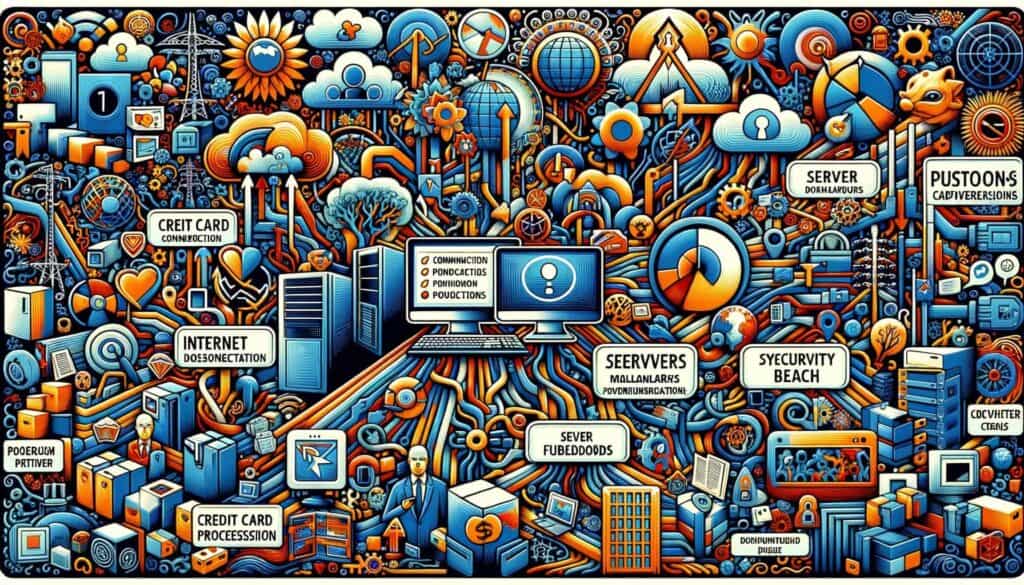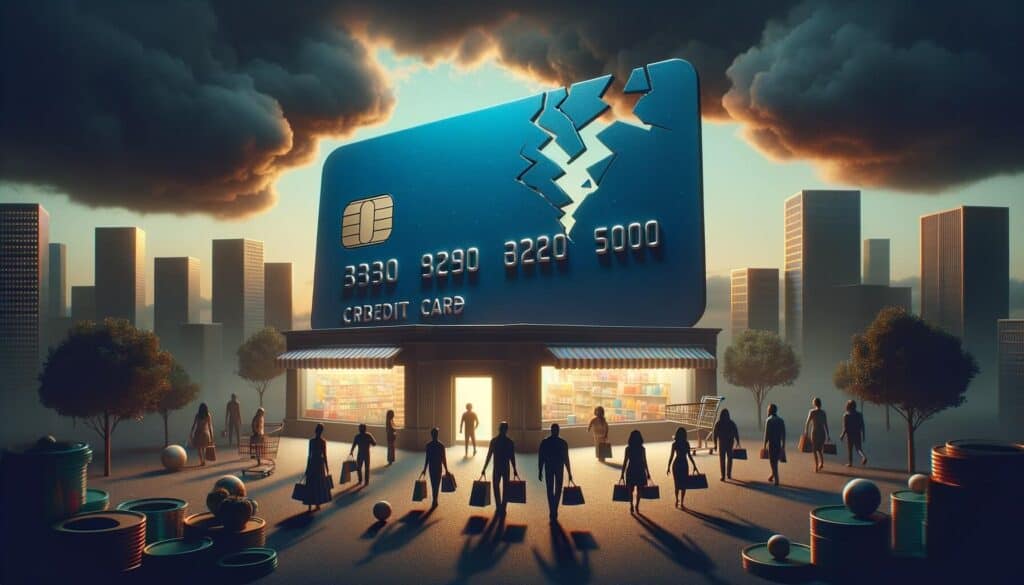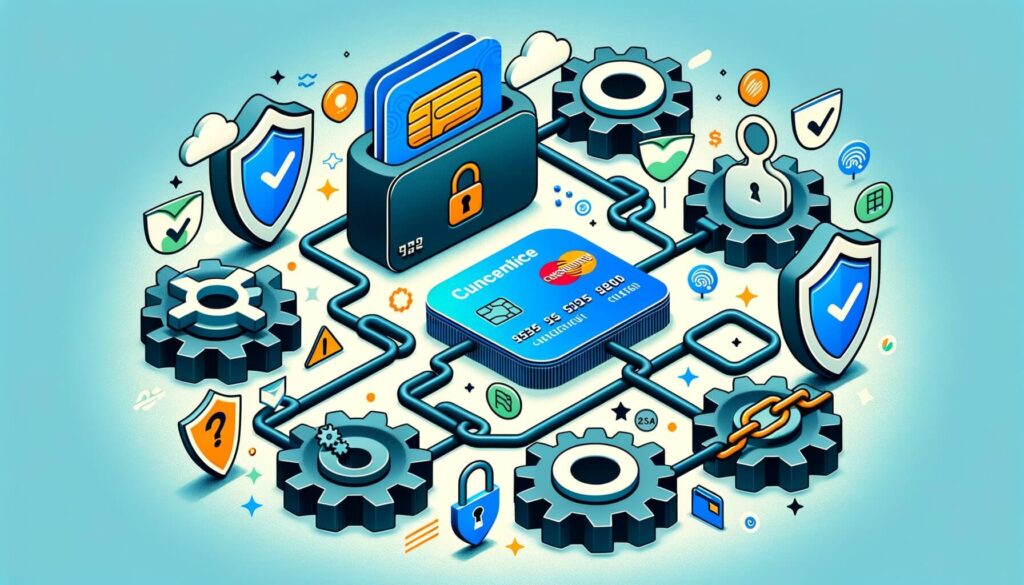
By Catharine Proctor April 2, 2025
In today’s digital age, credit card processing has become an integral part of our daily lives. Whether we are shopping online or making purchases at a physical store, credit card processing systems play a crucial role in facilitating transactions. However, like any other technology, these systems are not immune to outages. Credit card processing outages can occur due to various reasons, causing inconvenience to both businesses and customers.
In this article, we will explore the importance of credit card processing systems, common causes of outages, their impact on businesses, steps to minimize the risk, what to do during an outage, how to communicate with customers, and address frequently asked questions.
The Importance of Credit Card Processing Systems

Credit card processing systems have revolutionized the way we make payments. They provide a convenient and secure method for businesses to accept payments from customers. These systems enable businesses to accept credit and debit card payments, reducing the reliance on cash transactions. With the rise of e-commerce, credit card processing systems have become even more critical, as they facilitate online transactions and enable businesses to reach a global customer base.
Furthermore, credit card processing systems offer benefits such as faster transaction processing, increased sales, and improved customer satisfaction. They allow businesses to process payments in real-time, reducing the time customers spend waiting in line. This not only enhances the overall shopping experience but also increases the efficiency of businesses. Additionally, credit card processing systems provide a secure method of payment, protecting both businesses and customers from the risks associated with cash transactions.
Common Causes of Credit Card Processing Outages

Credit card processing outages can occur due to various reasons, ranging from technical glitches to external factors. One common cause is system maintenance or upgrades. When credit card processing providers perform maintenance or upgrade their systems, it can lead to temporary outages. While these outages are usually planned and communicated in advance, they can still cause disruptions to businesses and customers.
Another common cause of outages is network connectivity issues. If there is a problem with the internet connection or the network infrastructure, it can prevent credit card processing systems from functioning properly. This can be particularly problematic for businesses that rely heavily on online transactions.
Furthermore, software bugs or glitches can also lead to credit card processing outages. These bugs can cause the system to crash or malfunction, rendering it unable to process transactions. In some cases, these issues may be identified and resolved quickly, while in others, it may take longer to fix the problem.
External factors such as power outages or natural disasters can also disrupt credit card processing systems. If a business loses power or experiences a network outage due to a storm or other unforeseen circumstances, it can result in a temporary outage of the credit card processing system.
Impact of Credit Card Processing Outages on Businesses

Credit card processing outages can have a significant impact on businesses, both financially and reputationally. When a credit card processing system goes down, businesses are unable to accept credit or debit card payments. This can lead to a loss of sales and revenue, especially if customers do not have alternative payment methods available.
Moreover, credit card processing outages can damage a business’s reputation. Customers expect businesses to have reliable and efficient payment systems in place. If a business experiences frequent outages or prolonged downtime, it can erode customer trust and loyalty. Negative experiences with payment processing can result in customers seeking alternative businesses that offer more reliable payment options.
Additionally, credit card processing outages can cause operational disruptions. Businesses may need to allocate additional resources to manually process payments or find alternative ways to accept payments during an outage. This can lead to increased costs and inefficiencies, impacting the overall operations of the business.
Steps to Minimize the Risk of Credit Card Processing Outages

While credit card processing outages cannot be completely eliminated, businesses can take steps to minimize the risk and mitigate the impact. Here are some key steps to consider:
1. Choose a reliable credit card processing provider: Selecting a reputable and reliable credit card processing provider is crucial. Research different providers, read reviews, and consider their track record in terms of uptime and customer support. Look for providers that offer redundancy and backup systems to minimize the risk of outages.
2. Implement a backup payment method: Having a backup payment method in place can help businesses continue accepting payments during an outage. This could include accepting cash, checks, or alternative digital payment options such as mobile wallets or online payment gateways.
3. Regularly update and maintain systems: Keeping credit card processing systems up to date with the latest software updates and security patches is essential. Regular maintenance and monitoring can help identify and resolve potential issues before they cause an outage.
4. Invest in reliable internet connectivity: A stable and reliable internet connection is crucial for credit card processing systems. Consider investing in redundant internet connections or backup solutions to ensure uninterrupted connectivity.
5. Develop a disaster recovery plan: Having a well-defined disaster recovery plan in place can help businesses respond effectively to credit card processing outages. This plan should outline the steps to be taken during an outage, including communication with customers and alternative payment methods.
6. Test and monitor systems regularly: Regularly testing and monitoring credit card processing systems can help identify any potential issues or vulnerabilities. Conducting regular tests and simulations can help businesses identify and address weaknesses in their systems before they cause an outage.
What to Do During a Credit Card Processing Outage
Despite taking preventive measures, credit card processing outages can still occur. When faced with an outage, businesses should follow these steps to minimize the impact:
1. Stay calm and communicate with staff: It is important to remain calm and communicate with staff members about the outage. Ensure that everyone is aware of the situation and understands the alternative payment methods that can be used.
2. Inform customers about the outage: Promptly inform customers about the outage and the alternative payment options available. Display clear signage at the point of sale and communicate through various channels such as social media, email, or SMS.
3. Accept alternative payment methods: During an outage, businesses should be prepared to accept alternative payment methods such as cash, checks, or mobile wallets. Train staff members on how to process these payments and ensure that they have the necessary tools and resources.
4. Keep records of transactions: It is important to keep detailed records of all transactions processed during the outage. This will help reconcile payments once the credit card processing system is back online.
5. Communicate with the credit card processing provider: Contact the credit card processing provider to report the outage and seek assistance. They may be able to provide updates on the status of the outage and offer guidance on resolving the issue.
How to Communicate with Customers During an Outage
Effective communication with customers during a credit card processing outage is crucial to minimize frustration and maintain customer satisfaction. Here are some tips for communicating with customers:
1. Be transparent and proactive: Inform customers about the outage as soon as possible. Clearly communicate the issue, the expected duration of the outage, and any alternative payment methods available. Being transparent and proactive will help manage customer expectations and reduce frustration.
2. Utilize multiple communication channels: Use various communication channels to reach customers, such as social media, email, SMS, and in-store signage. This ensures that customers receive the information through their preferred channels and reduces the likelihood of missed communication.
3. Provide regular updates: Keep customers informed about the progress of the outage and any updates regarding the resolution. Regularly update your communication channels to provide accurate and timely information.
4. Offer incentives or discounts: To compensate for the inconvenience caused by the outage, consider offering incentives or discounts to customers. This can help maintain customer loyalty and mitigate any negative impact on your business.
5. Train staff on customer service: Ensure that your staff is trained to handle customer inquiries and complaints during an outage. Empower them to provide exceptional customer service and address any concerns promptly.
Frequently Asked Questions about Credit Card Processing Outages
Q1: How long do credit card processing outages typically last?
A1: The duration of credit card processing outages can vary depending on the cause and the response time of the credit card processing provider. While some outages may be resolved within a few minutes, others may take several hours or even days to fix.
Q2: Can businesses still accept credit card payments during an outage?
A2: In most cases, businesses are unable to accept credit card payments during an outage. However, having alternative payment methods in place, such as cash or checks, can help businesses continue accepting payments.
Q3: How can businesses minimize the impact of credit card processing outages?
A3: Businesses can minimize the impact of credit card processing outages by choosing a reliable credit card processing provider, implementing backup payment methods, regularly updating and maintaining systems, investing in reliable internet connectivity, and developing a disaster recovery plan.
Q4: What should businesses do if they experience frequent credit card processing outages?
A4: If a business experiences frequent credit card processing outages, it may be necessary to reevaluate the chosen credit card processing provider. Consider switching to a more reliable provider that offers better uptime and customer support.
Q5: How can businesses communicate with customers during a credit card processing outage?
A5: Businesses can communicate with customers during a credit card processing outage through various channels such as social media, email, SMS, and in-store signage. It is important to be transparent, provide regular updates, and offer alternative payment options.
Conclusion
Credit card processing outages can be disruptive and costly for businesses. Understanding the common causes of outages and taking proactive steps to minimize the risk can help businesses mitigate the impact.
By choosing a reliable credit card processing provider, implementing backup payment methods, regularly updating and maintaining systems, investing in reliable internet connectivity, and developing a disaster recovery plan, businesses can reduce the likelihood of outages and ensure smooth operations.
In the event of an outage, effective communication with customers and the ability to accept alternative payment methods are crucial to maintaining customer satisfaction. By following these guidelines, businesses can navigate credit card processing outages with minimal disruption and protect their reputation.